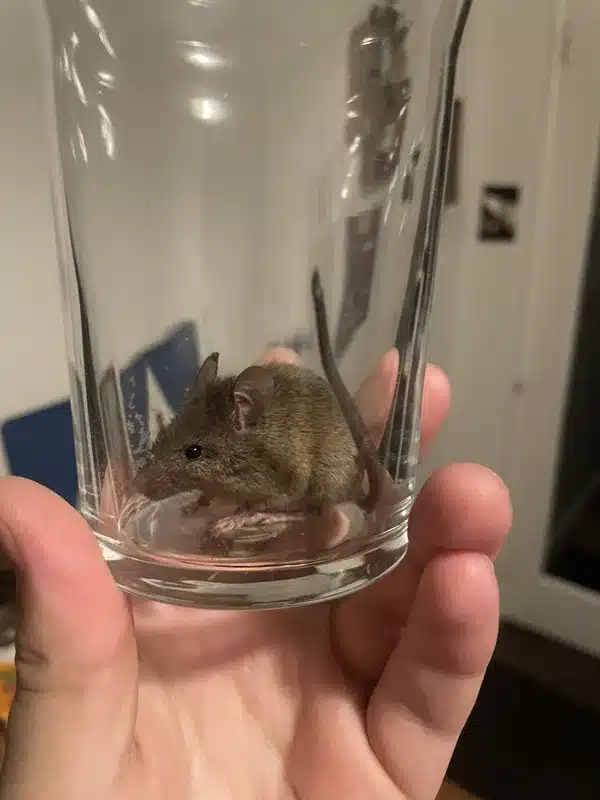Homeowners often struggle to tell the difference between a mouse and a vole when they spot a small, furry critter in their yard or home. While both are small rodents, understanding the key differences between mice and voles is crucial for effective pest control. During my four years as a registered technician in the DMV area, I’ve encountered many situations where homeowners confuse vole activity in their lawns with mice infestations indoors.
The most important thing to remember is that voles rarely enter homes, while mice actively seek indoor shelter. This fundamental difference in habitat preferences drives everything from their physical characteristics to the type of damage they cause. Let’s explore these differences so you can properly identify which pest you’re dealing with.
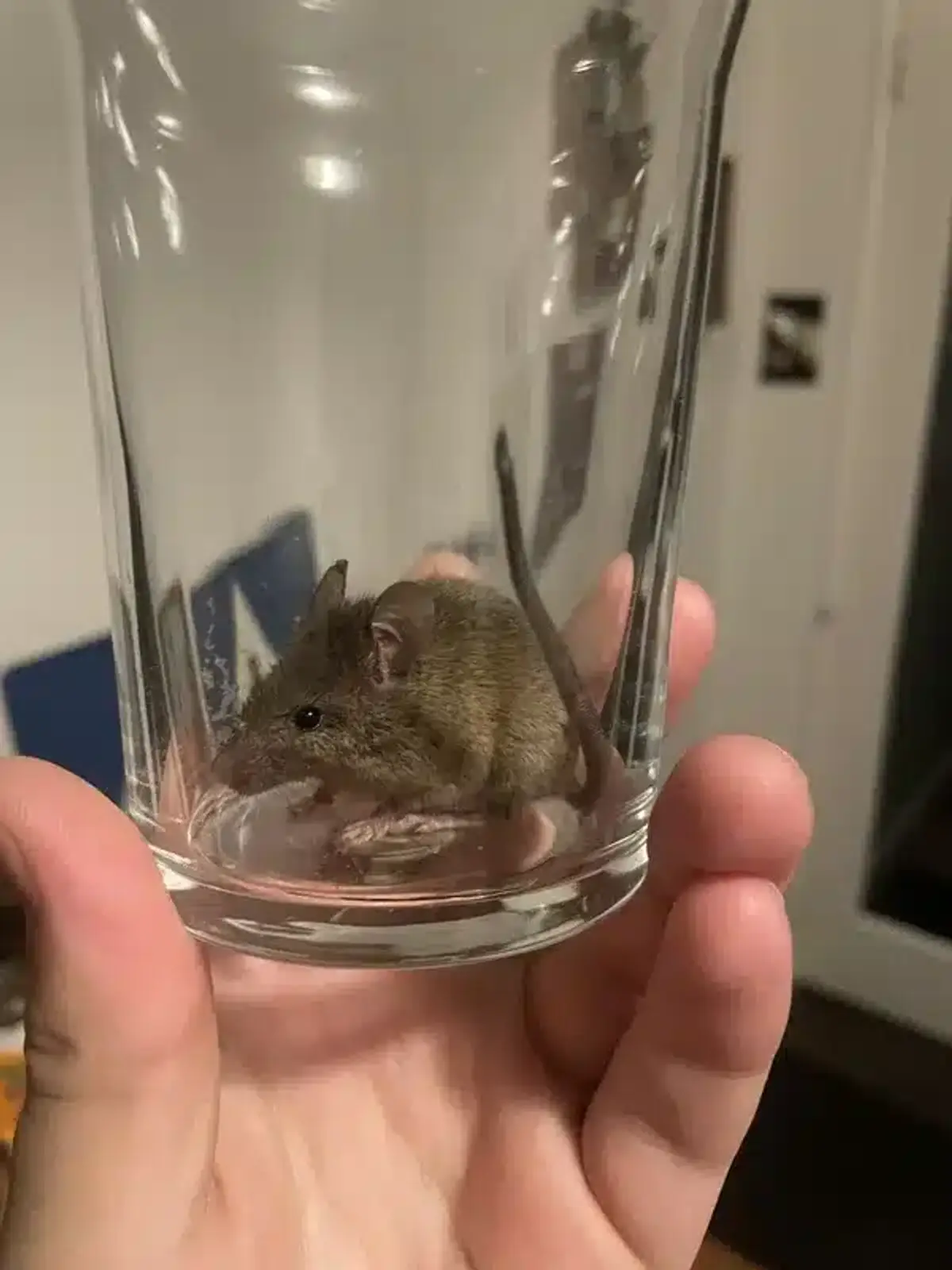
Physical Differences Between Mouse vs Vole
The easiest way to distinguish a mouse or vole is by examining their physical characteristics. These differences reflect their distinct lifestyles and habitat preferences.
Tail Length: The Most Obvious Difference
The tail is the quickest way to tell them apart. A mouse has a long tail that’s roughly equal to its body length, typically measuring 3-4 inches on a body that’s 2-3 inches long. The tail is scaly and nearly hairless.
In contrast, voles have short tails that are only about 1-2 inches long, roughly the size of their hind foot. Vole tails are also covered in fur, making them look stubby compared to the sleek mouse tail.
Ears and Snout Shape
Mice have prominent, rounded ears that stick out noticeably from their heads. Their snout is pointed, giving them a sharp-featured appearance that helps them navigate tight spaces.
Voles have much smaller ears that are partially hidden in their fur. Their snout is blunt and rounded, which reflects their herbivorous diet and ground-dwelling lifestyle.
Body Shape and Size
A mouse has a slender, elongated body built for climbing and squeezing through small openings. They’re typically 2-3 inches long and have a high-profile stance.
Voles are more compact and stocky, with a body that’s approximately 3 inches long but much rounder. They have a low-slung appearance that’s perfect for tunneling through grass and vegetation.

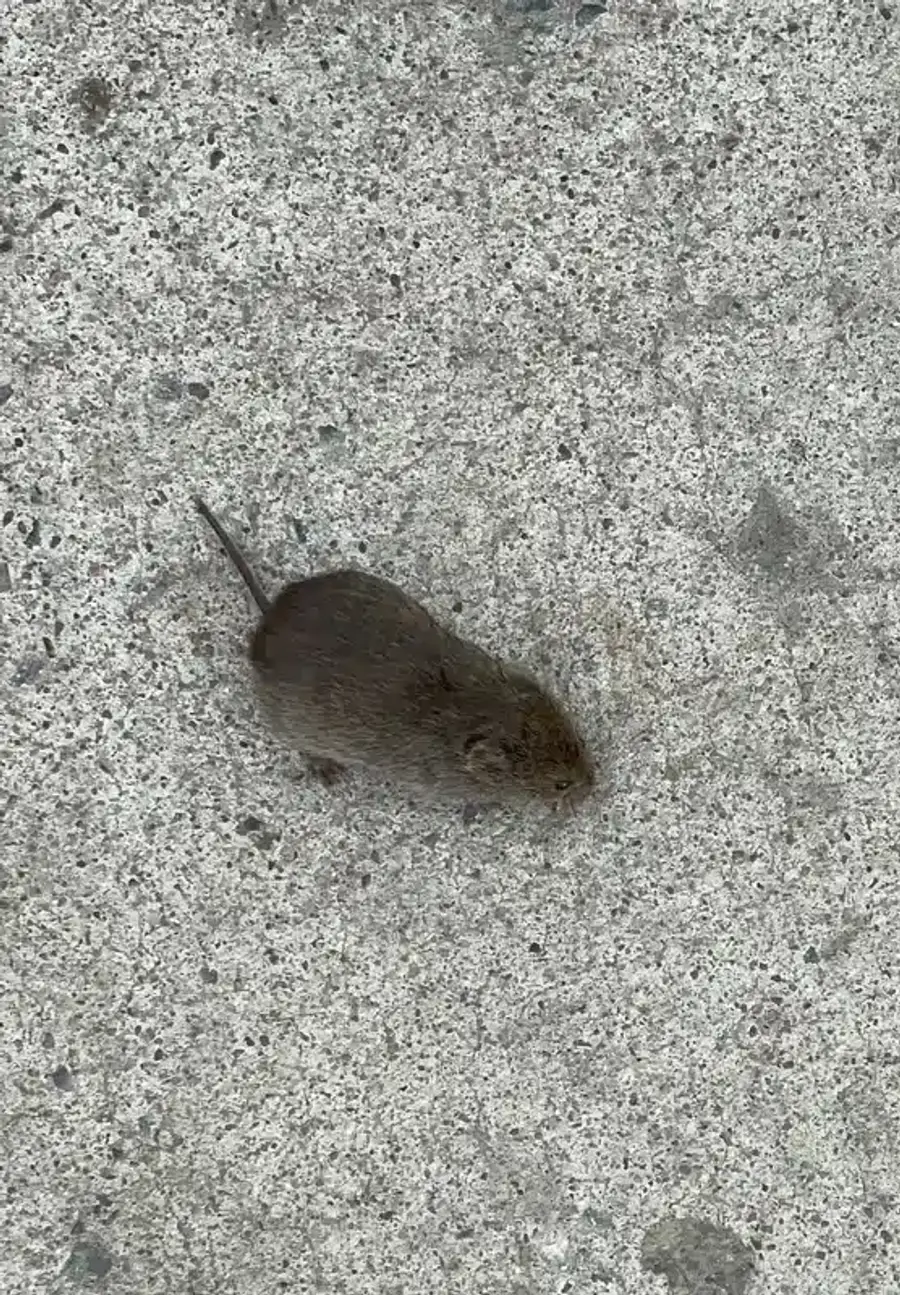
| Aspect | House Mouse | Vole |
|---|---|---|
| Tail Length | 3-4 inches (equals body length) | 1-2 inches (short & furry) |
| Ears | Large, prominent, rounded | Small, hidden in fur |
| Snout Shape | Pointed & sharp | Blunt & rounded |
| Body Shape | Slender & elongated | Compact & stocky |
Habitat Preferences: Indoor vs Outdoor Living
Understanding where you find these rodents is just as important as knowing what they look like. The difference between voles and mice becomes crystal clear when you consider their preferred habitats.
Why Mice Love Your Home
House mice actively seek indoor environments, especially during colder months. They’re excellent climbers and can squeeze through gaps as small as 1/4 inch to access your home. Once indoors, they prefer warm areas near food sources like kitchens, pantries, and storage areas.
In my experience serving the DMV area, mice in the house become especially problematic in older neighborhoods like Old Town Alexandria, where aging infrastructure provides numerous entry points.
Voles Prefer Outdoor Spaces
Voles typically stay outdoors and rarely enter homes. They prefer areas with dense vegetation, tall grass, and mulched gardens. Meadow voles favor damp meadows and turfgrass areas, while woodland voles prefer orchards and areas with heavy ground cover.
The main reason voles don’t come indoors is their body structure-they’re poor climbers and feel vulnerable on bare surfaces. They need the security of vegetation and tunnels to feel comfortable.
Diet and Feeding Behavior
What these rodents eat reveals a lot about their behavior and the type of damage they cause around your property.
Mice Are Opportunistic Omnivores
Mice are omnivores that will eat almost anything. Their primary diet includes grains, seeds, and cereals, but they also consume insects, meat scraps, and even soap or glue when other food sources are scarce. This varied diet is why they’re so successful at living near humans.
Voles Stick to Plant Matter
Voles are primarily herbivores that focus on grass, seeds, bulbs, and tree bark. During winter, they often gnaw on the bark and cambium of young trees and shrubs, which can kill the plants. They also cache seeds and tubers for later consumption.
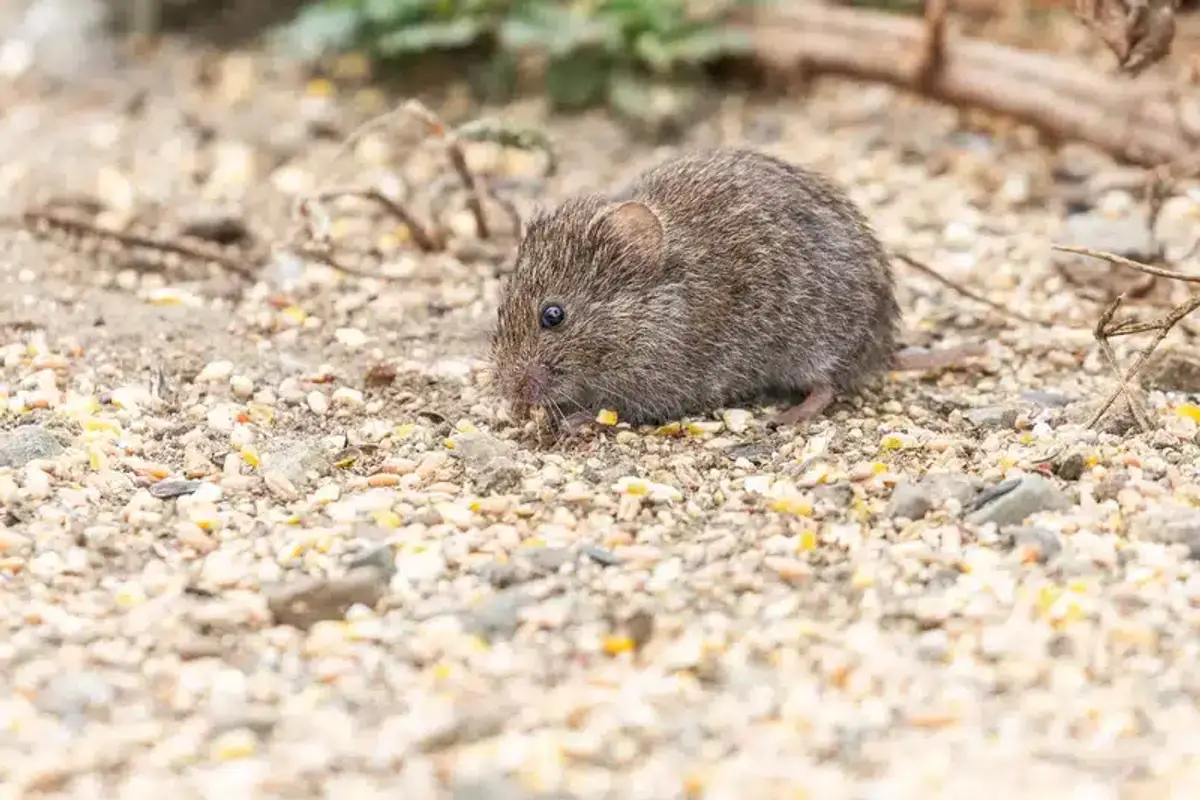
Damage Patterns: How to Identify Which Pest You Have
The type of damage you discover often provides the clearest indication of whether you’re dealing with mice or a vole problem.
Mouse Damage Occurs Indoors
When dealing with mice, you’ll find damage inside your home. Common signs include:
- Chewed food packaging in pantries and cabinets
- Gnawed wires or furniture with 1/2-inch holes and rough edges
- Shredded nesting materials in wall voids or appliance areas
- Dark, pointed droppings about 1/8 inch long along walls and in cupboards
- Grease marks along frequently traveled routes
Vole Damage Shows Up in Your Landscape
Vole damage is exclusively outdoor and focuses on your lawn and garden. Look for these telltale signs:
- Surface runways in grass that are 1-2 inches wide with closely clipped vegetation
- Small holes about 1 inch in diameter without soil mounds nearby
- Gnawed bark at soil level on trees and shrubs, showing 1/4-inch paired incisor marks
- Damaged bulbs and root systems in garden beds
- Tunnel systems that become visible when snow melts or grass is lifted
The runway pattern is particularly distinctive-it looks like someone drew meandering paths through your lawn with closely mowed grass.
Seasonal Activity and Reproduction
Both mice and voles are prolific breeders, but their activity patterns differ significantly throughout the year.
Mouse Activity Patterns
Mice are primarily nocturnal and breed year-round when living indoors. They reach sexual maturity at 5-7 weeks and can produce 5-10 litters per year with 5-6 pups each. This rapid reproduction rate makes early intervention crucial for mouse control.
What does the science say?
According to the University of Missouri Extension, house mice can produce an average of 8 litters per year with 4-8 pups each under optimal conditions. This extraordinary reproductive capacity means a single breeding pair can potentially produce over 50 offspring in one year, emphasizing why professional intervention becomes critical once an infestation is established.
Vole Seasonal Behavior
Voles are active both day and night and don’t hibernate during the winter. They remain active under snow cover, which is why you often discover extensive runway damage when snow melts in spring. Voles also reproduce rapidly, reaching maturity at 3-5 weeks and producing multiple litters throughout the year.
Vole populations tend to cycle every 3-5 years, with some years seeing dramatic population explosions that can exceed 1,000 voles per acre.
Prevention Strategies for Mice vs Voles
Effective prevention requires different approaches depending on which rodent you’re targeting.
Mouse Prevention Focuses on Exclusion
Since mice actively try to enter homes, prevention centers on blocking their access:
- Seal gaps 1/4 inch or larger with steel wool and metal flashing
- Store food in airtight containers with tight-fitting lids
- Eliminate clutter that provides nesting sites
- Fix moisture problems that attract mice
- Keep counters and floors clean of food debris
Vole Prevention Emphasizes Habitat Modification
Since voles prefer dense cover, prevention focuses on making your landscape less attractive:
- Keep grass cut short (3 inches or less) to reduce cover
- Remove dense mulch within 12 inches of tree trunks
- Clear brush piles and leaf accumulations near foundations
- Install 1/4-inch hardware cloth guards around valuable trees
- Maintain a clean border between lawn areas and field margins
As noted by the University of Minnesota Extension, habitat modification is the most effective long-term strategy for vole control.
Essential Prevention Steps
- For Mice: Seal gaps 1/4 inch or larger with steel wool and metal flashing
- For Voles: Keep grass cut short (3 inches or less) to reduce cover
- Food Storage: Use airtight containers for mice; remove fallen fruits for voles
- Moisture Control: Fix leaks promptly - both pests are attracted to water sources
- Exclusion: Install hardware cloth guards around valuable trees to prevent vole bark damage
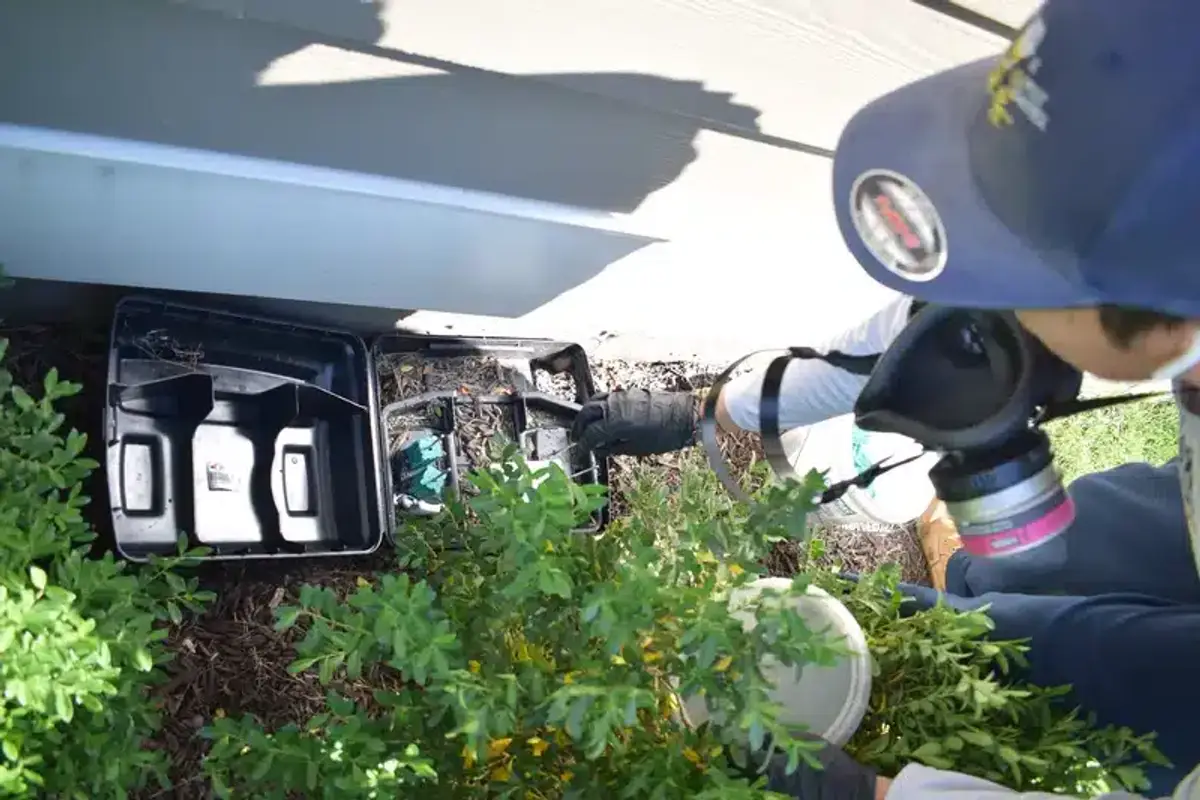
Control Strategies Based on Proper Identification
Once you’ve properly identified whether you’re dealing with mice or voles, you can choose the most effective control strategy.
Mouse Control Methods
For mice, we typically use a combination of approaches:
- Tamper-resistant bait stations placed along walls and in areas of high activity
- Snap traps positioned perpendicular to walls where mice travel
- Regular monitoring and bait replacement every 4-6 weeks
- Exclusion work to prevent re-entry after population control
Our mice versus rats guide provides additional details on identifying different rodent species and appropriate control measures.
Vole Control Approaches
Vole control requires different tactics:
- Mouse-sized snap traps placed directly in runways
- Covering traps with inverted boxes to protect non-target animals
- Baiting with apple slices or peanut butter when necessary
- Focusing treatment during peak activity periods in fall and early spring
Because voles or mice require such different approaches, proper identification before starting any control program is essential.
Why Professional Identification Matters
In our family business that has served the DMV area for over 50 years, we’ve seen countless situations where homeowners waste time and money using the wrong control strategy. The difference between a vole and mouse isn’t just academic - it determines whether you need indoor pest control or landscape management.
Many homeowners mistake what are actually vole signs in their yard for mice, leading them to set mouse traps indoors when the real issue is outside. Conversely, some people ignore indoor mouse activity because they think they’re dealing with an outdoor vole infestation.
Our registered technicians can quickly identify which pest you’re dealing with and recommend the appropriate control strategy. We use products that have passed through our internal research team - formulations we’d feel comfortable using in our own homes.
Common Confusion with Other Small Mammals
Besides the mouse vs vole comparison, homeowners sometimes confuse these rodents with other small mammals.
Distinguishing from Shrews and Moles
A shrew is much smaller than both mice and voles, with a very pointed snout and tiny eyes. Shrews are insectivores, not rodents, and are actually beneficial for controlling pest insects.
A mole is a completely different animal that lives almost entirely underground. Moles create raised tunnel ridges in lawns and large soil mounds, unlike the surface runways that voles create.
Field Mice vs House Mice
The term “field mice” often causes confusion because it’s sometimes used to describe voles, deer mice, or white-footed mice. True house mice can live outdoors but prefer human structures. Our field mice versus house mice guide explains these distinctions in detail.
Understanding the differences between mice and voles helps you make informed decisions about pest control. Whether you’re dealing with mice in your home or voles in your landscape, the right identification leads to the right solution. If you’re unsure which pest you’re facing, don’t hesitate to contact a professional pest control service for proper identification and treatment recommendations.
For homeowners in the DMV area dealing with either mouse or vole issues, our team can provide expert identification and customized control solutions. Call us at 703-683-2000 or email info@bettertermite.com to discuss your specific situation and get a professional assessment.
Frequently Asked Questions
How do you tell a mouse from a vole?
+
The easiest way to tell them apart is by tail length. Mice have long tails that equal their body length (about 3-4 inches), while voles have short tails only 1-2 inches long. Mice also have larger ears and pointed snouts, whereas voles have small ears hidden in fur and blunt snouts. Additionally, mice prefer indoor environments while voles stay outdoors in grassy areas.
Do voles go in houses?
+
Voles rarely enter homes because they're poor climbers and prefer outdoor environments with dense vegetation. Their compact, low-slung bodies are built for tunneling through grass and soil, not navigating indoor spaces. Unlike mice, voles feel vulnerable on bare surfaces and avoid areas without vegetative cover. Accidental indoor entries only occur during extreme weather conditions.
Are voles as destructive as mice?
+
Voles and mice cause different types of damage. Mice damage food packaging, wires, and furniture inside homes, plus they pose health risks through disease transmission. Voles damage lawns, gardens, and tree bark outdoors. While vole infestations can severely impact landscaping and kill valuable plants through bark girdling, they don't pose the same health risks as indoor mouse problems.
Why do I suddenly have voles in my yard?
+
Vole populations naturally cycle every 3-5 years, so sudden appearances often coincide with population peaks. Contributing factors include dense vegetation providing cover, consistent food sources like grass and bulbs, mild weather conditions, and nearby habitat disruption that pushes voles into new areas. Excessive mulching and overgrown lawn edges also create ideal vole habitat.
What time of year are voles most active?
+
Voles remain active year-round and don't hibernate during the winter. They're particularly noticeable in spring when snow melts reveal their runway systems, and in fall when they prepare for winter by intensifying their bark-gnawing behavior. Despite their small size, voles continue scurrying around under snow cover throughout winter months.
Can I use mouse traps for voles?
+
Yes, you can use mouse-sized snap traps for voles, but placement differs significantly. For mice, place traps along walls perpendicular to their travel routes. For voles, place traps directly in their grass runways and cover with an inverted box to protect non-target animals. The size of a mouse trap works well for voles, but mouse bait stations designed for indoor use aren't effective for outdoor vole control.
How can I prevent voles without harming other wildlife?
+
Focus on habitat modification rather than lethal control measures. Keep grass mowed short, remove dense mulch from around trees, and eliminate brush piles. Install hardware cloth guards around valuable plants rather than using widespread trapping. These methods specifically target vole preferences without affecting other beneficial wildlife that may also eat insects and other garden pests.
What's the difference between dealing with mice and dealing with a vole problem?
+
Mouse control focuses on indoor exclusion, sanitation, and structural modifications to prevent entry. Vole control emphasizes outdoor habitat modification and landscape management. Professional pest control for mice typically involves indoor bait stations and sealing entry points, while vole management requires reducing ground cover and sometimes targeted outdoor trapping in runway systems.
With five years of hands-on experience in the pest control industry, George Schulz is a registered technician with the Virginia Pest Management Association and a proud third-generation professional in a family business that's been protecting homes for over 57 years. He manages and trains a team of service pros while also leading internal research efforts—recently spearheading a deep-dive review of thousands of documents on pest control materials to hand-pick the most kid and pet friendly, most effective solutions tailored specifically for homes in the DC metro area.
